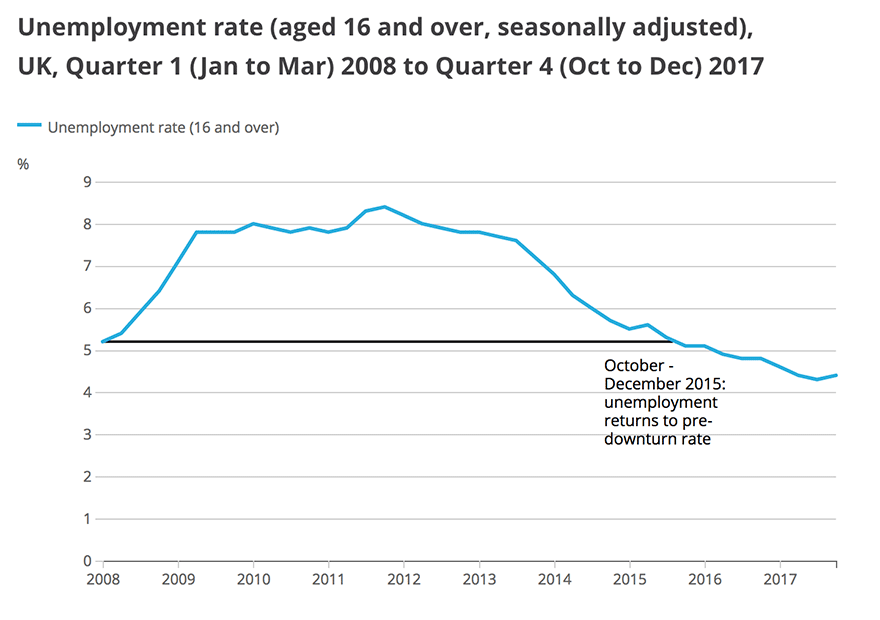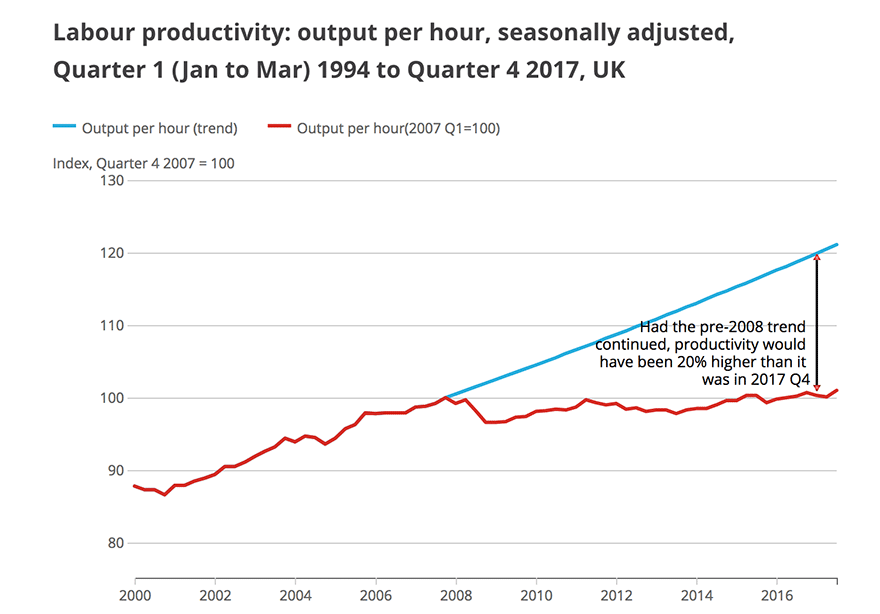Is worker health the answer to the ‘productivity puzzle’?
While GDP has recovered since the 2008/9 Recession, productivity has more or less flat-lined. This is one of the highlights in a report from the Office for National Statistics (ONS) asking if the economy has recovered 10 years on.
Having shrunk by more than 6% between the first quarter of 2008 and the second quarter of 2009, the UK economy took five years to get back to the size it was before the crisis. The latest data show that the UK economy is now 11% bigger than it was before the Recession, says the report.
A shrinking economy meant many lost their jobs and employers stopped hiring. By the end of 2011, the quarterly unemployment rate reached 8.4%, the highest since 1995.
By the end of 2015, unemployment returned to its pre-downturn rate, and since then it has continued to fall – reaching a record low of 4.3% in the third quarter of 2017.

Source: ONS Unemployment Rate
Earnings have lagged behind prices for most of the decade since the start of the recession. In the public sector, a pay freeze from 2011 and pay cap from 2013 kept wage rises below inflation, while in the private sector wage growth was also slow. There was a two-year period beginning around July 2014 when wages rose in real terms due largely to the fall in the price of oil causing prices to come down.
But between November 2015 and October 2016 the pound fell in value by 20%, including a record 6.5% fall between June and July 2016 following the EU referendum. Increased import costs caused prices to rise and earnings are again failing to keep up.
One way of measuring the strength of the economy is to work out how much money each worker adds to the economy – their labour productivity, measured in output per hour.

Source: ONS Labour Productivity UK July to September 2017
Productivity is GDP divided by the number of hours worked. It had been rising steadily before the recession, but it slumped in 2008 and has barely recovered since. Had the pre-2008 trend continued, productivity would have been 20% higher than it actually was at the end of 2017.
Lots of reasons have been suggested for this, including banks not being willing to lend to new businesses, low levels of business investment and companies being able to keep staff on instead of making them redundant, because wages have not been rising.
But the phenomenon of low productivity growth, common to many economies across Europe, is not fully understood and has been called the “productivity puzzle”.
There are many factors affecting productivity, including technological change, morale and skill levels, but according to online recruitment services firm Agency Central one of the biggest influences today is worker stress. “Research suggests that the erosion of the traditional 9-5 working day now means that a typical UK office worker may cook as few as three meals from scratch each week,” says the agency.
“Poor nutrition, combined with the sedentary working lifestyle encouraged by many employers gives real cause for concern in a nation where levels of diabetes rose by 65% between 2006 and 2016. Clearly this is a poor foundation for productivity.”
The full ONS article can be accessed here.
Read more Insights here...